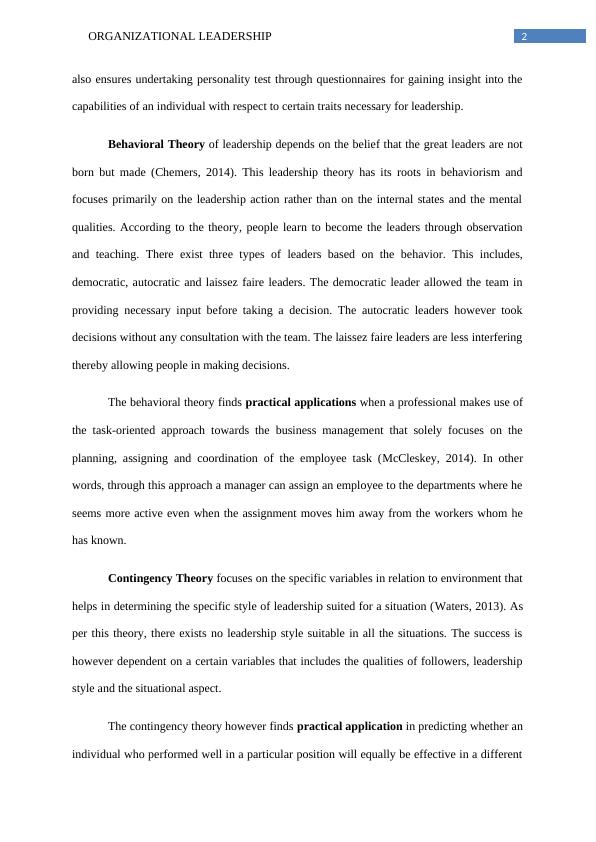Organizational Leadership: Core Theories, Leadership Styles and Group Dynamics
Write a 5 to 7 page article for a magazine focusing on the practical implications of group theory, including theory explanation, research citation, and real-world examples.
12 Pages2774 Words217 Views
Added on 2023-06-10
About This Document
This article provides an overview of organizational leadership, including core theories, leadership styles, and group dynamics. It discusses trait theory, behavioral theory, contingency theory, participative theory, management theory, and relationship theory. It also explores situational, transformational, and transactional leadership styles and their practical applications. The article concludes with a discussion on the importance of choosing the right leadership style for a group's success.
Organizational Leadership: Core Theories, Leadership Styles and Group Dynamics
Write a 5 to 7 page article for a magazine focusing on the practical implications of group theory, including theory explanation, research citation, and real-world examples.
Added on 2023-06-10
ShareRelated Documents
End of preview
Want to access all the pages? Upload your documents or become a member.
Leadership Essay 2022
|7
|2120
|43
Management and Leadership - PDF
|16
|4996
|131
LEADERSHIP. Leadership Name of the Student Name of the
|5
|365
|288
People, Culture and Contemporary Leadership: Theories, Styles and Personal Experience
|10
|2404
|96
Research Essay on Leadership Theory and their Models
|6
|1397
|47
Impact Of Organizational Structure & Leadership Style Report Of Innov8
|11
|3171
|52




